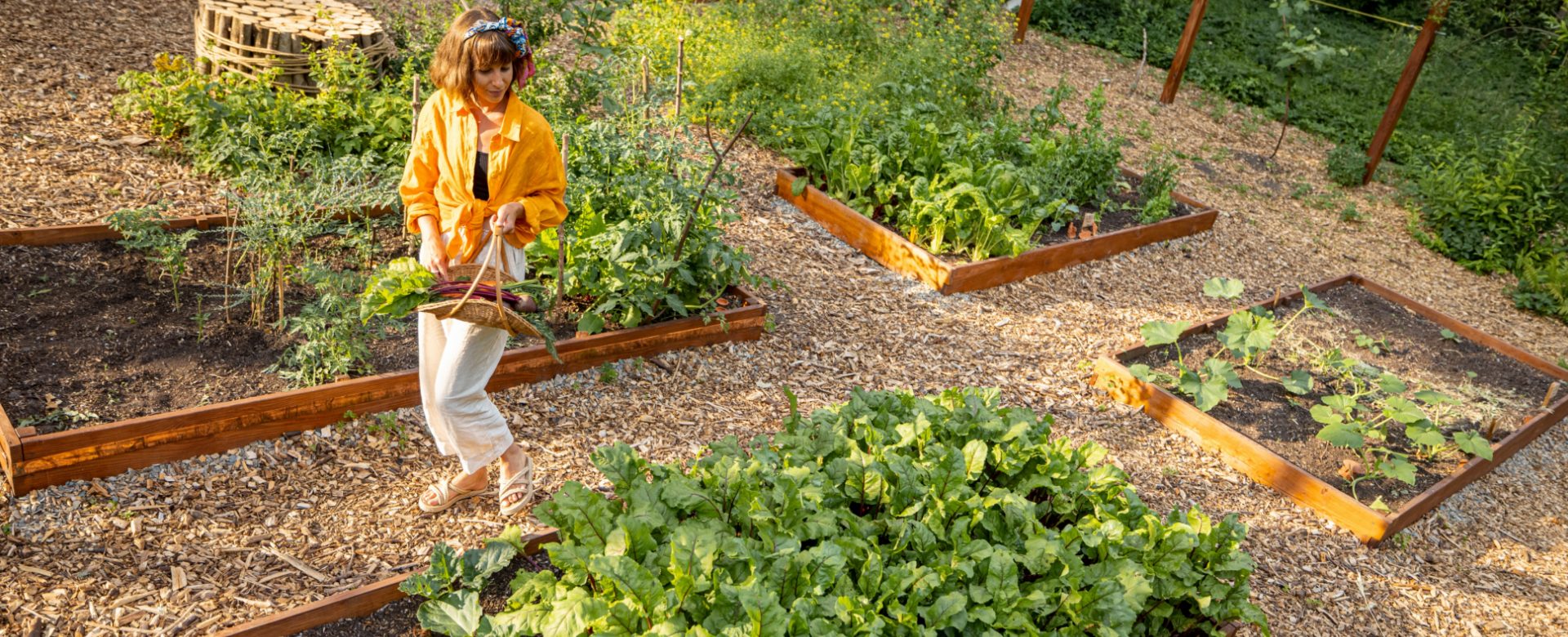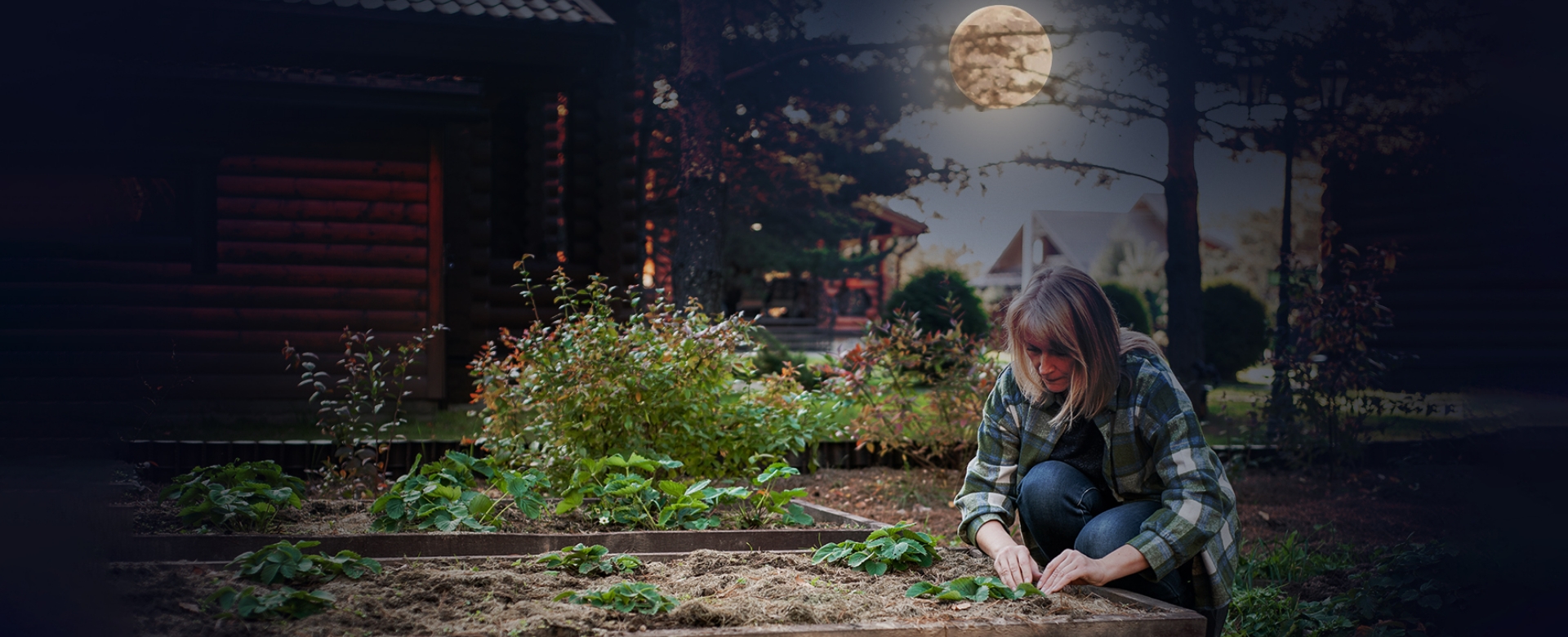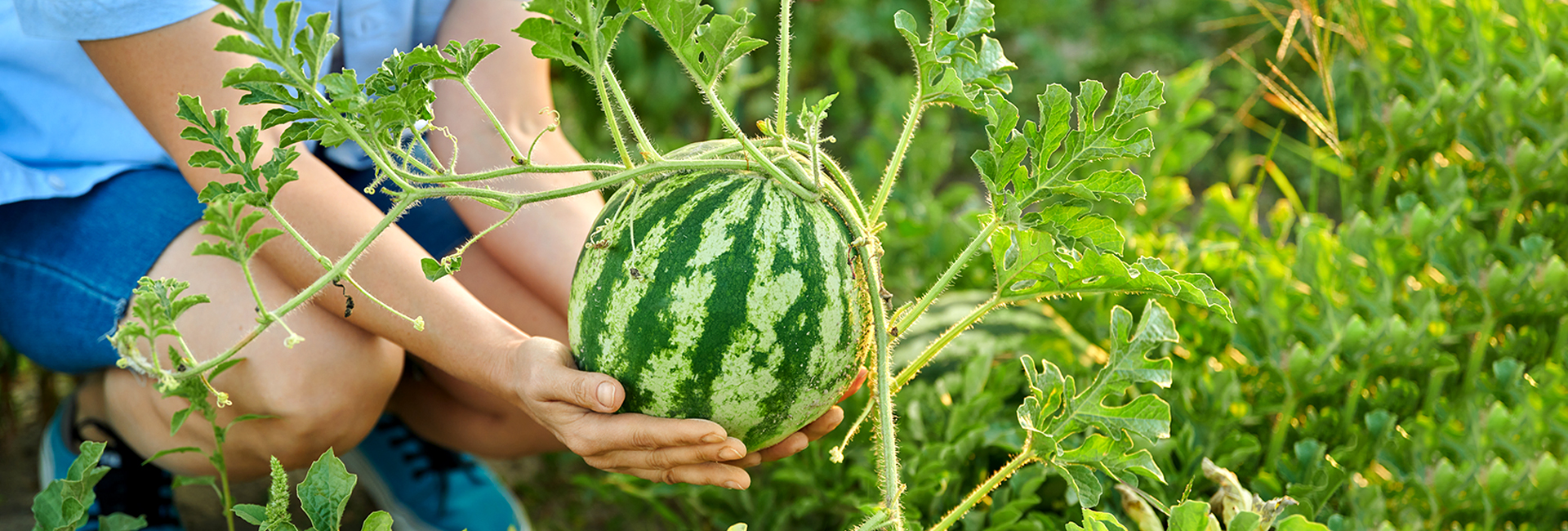Is your back sore from constant weeding and your wallet strained by the cost of fertilizer?
Then it’s time to ditch traditional gardening and explore a simpler, more sustainable method.
Enter Back to Eden gardening, a low-maintenance approach that mimics nature’s way of creating healthy soil. By layering organic materials, you can give weeds the boot, boost fertility, and enjoy a flourishing garden with way less effort.
In this blog post, we’ll introduce you to the principles of Back to Eden gardening, explain how it works, and provide practical tips to get started.
What Is Back to Eden Gardening?
Back to Eden gardening was developed by Paul Gautschi, a passionate gardener who sought a more natural way to cultivate his plants. Inspired by the lush forests where plants thrive without human intervention, Gautschi created a method that mimics nature’s approach to soil health. The key concept of Back to Eden gardening is layering organic materials to suppress weeds and build fertility.
The Back to Eden garden method involves covering the soil with a thick layer of mulch, typically wood chips, which breaks down over time to enrich the soil. By adopting this approach, you can create a garden that requires less maintenance and produces healthier plants.
In the following sections, we’ll explore how Back to Eden gardening works and how you can implement it in your own garden.
How Does It Work?
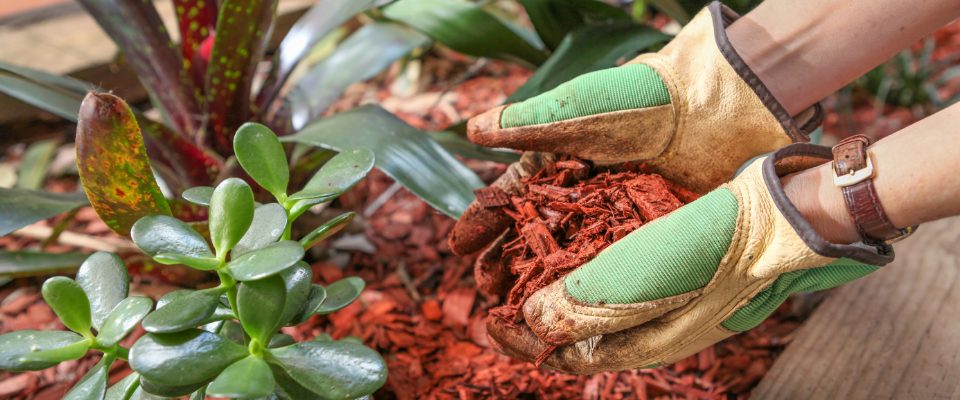
One of the most appealing aspects of Back to Eden gardening is that it eliminates the need for tilling. Tilling disrupts the soil structure and can lead to erosion and the loss of nutrients. Instead, this method focuses on layering organic materials to create a fertile, weed-free environment.
The process begins by suppressing existing vegetation with a layer of newspaper or cardboard. This smothers the weeds and prevents them from growing through your mulch. Next, you can add an optional compost layer to provide additional nutrients for your plants.
Finally, cover the entire area with a thick layer of wood chips, which will act as mulch. The wood chips not only suppress weeds but also retain moisture, reducing the need for frequent watering. Over time, the mulch breaks down and adds organic matter to the soil, improving its structure and fertility. By following this layering process, you can create a thriving garden with minimal effort.
Getting Started with Back to Eden
To get started with Back to Eden gardening, you’ll first need to choose a location for your garden. Whether you’re converting an existing garden bed or starting a new one, the process is the same. Begin by preparing the bed, which involves smothering any existing plants with a layer of newspaper or cardboard.
Once the area is prepared, you can start layering your organic materials. Begin with a thick layer of newspaper or cardboard to suppress weeds. If desired, add a layer of compost for extra nutrients. Finally, cover the entire area with a generous layer of wood chips. The wood chips should be several inches thick to effectively suppress weeds and retain moisture.
After layering your materials, you can plant directly into the mulch. Simply move aside the wood chips, dig a small hole, and plant your seeds or seedlings. The mulch will help retain moisture and keep the soil temperature stable, promoting healthy plant growth.
Pros and Cons of Back to Eden
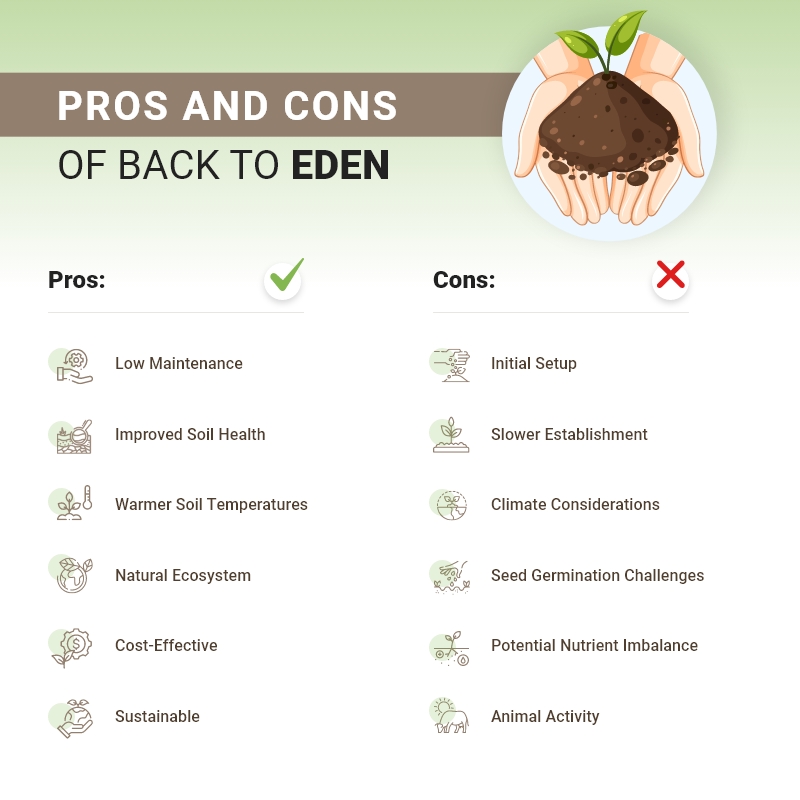
Back to Eden gardening has gained popularity for its low-maintenance appeal. However, some aspects have drawn criticism.
Pros:
- Low Maintenance: One of the biggest advantages is its low maintenance. Wood chips reduce weeds and retain moisture, cutting down significantly on the time needed for weeding and watering. This makes it ideal for those with busy schedules or limited gardening experience.
- Improved Soil Health: Organic materials like wood chips break down over time, nourishing the soil and possibly reducing the need for synthetic fertilizers. This leads to better soil structure and fertility in the long run.
- Warmer Soil Temperatures: The dark color of wood chips absorbs heat from the sun, potentially warming the soil earlier in the spring and extending the growing season.
- Natural Ecosystem: Wood chips mimic the natural forest floor environment and support beneficial soil organisms such as earthworms and microbes. This creates a healthier environment for plant growth, encouraging a self-sustaining ecosystem.
- Cost-Effective: Once established, a Back to Eden garden requires fewer resources like fertilizers and weed control products, potentially saving you money over time.
- Sustainable: Using recycled materials like wood chips is an eco-friendly choice. It repurposes waste products and reduces the demand for non-renewable resources, contributing to a more sustainable gardening practice.
Cons:
- Initial Setup: Gathering and layering the materials needed for this method can take considerable time and effort. This upfront investment might be challenging for those new to gardening or those with limited time.
- Slower Establishment: Developing healthy soil through the use of wood chips takes time. Gardeners might experience slower initial plant growth compared to traditional methods that rely on immediate inputs like chemical fertilizers.
- Climate Considerations: This method may not be ideal for very dry or very wet climates. In extremely dry conditions, wood chips might not provide enough moisture retention, while in very wet climates, they could become waterlogged and lead to root rot.
- Seed Germination Challenges: Fresh wood chips can sometimes inhibit seed germination due to the release of certain chemicals. This requires gardeners to make adjustments, such as pre-composting the wood chips or using them around established plants rather than seedlings.
- Potential Nutrient Imbalance: Decomposing wood chips can temporarily tie up nitrogen in the soil, necessitating the addition of extra nitrogen sources to maintain a balanced nutrient profile for plants.
- Animal Activity: Wood chips could attract rodents or other animals looking for food or shelter, potentially leading to increased garden maintenance and the need for pest control measures.
Related Gardening Methods
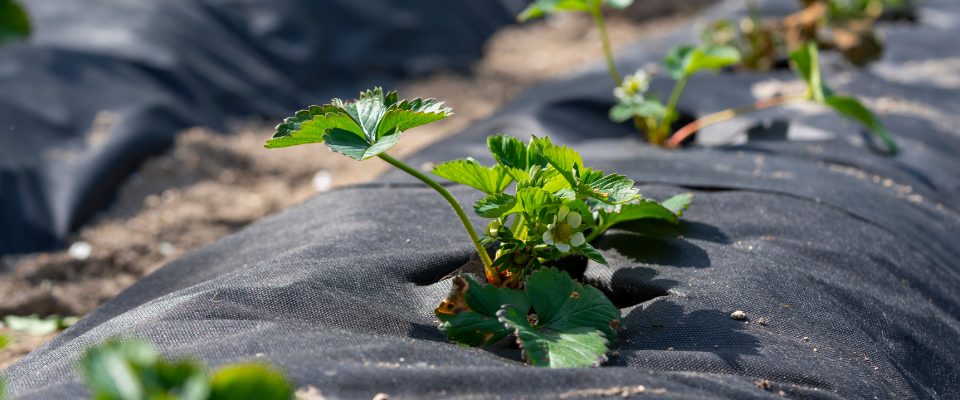
Back to Eden gardening isn’t the only method that builds healthy soil without tilling. There are several other gardening approaches with similar principles that can be used alongside or instead of Back to Eden gardening.
Sheet Mulching
Sheet mulching is a method that involves layering organic materials, much like Back to Eden gardening. It typically starts with cardboard or newspaper to suppress weeds, followed by layers of compost, straw, and other organic materials. This method also helps build soil fertility and structure over time.
No-Till Gardening
No-till gardening avoids disturbing the soil structure by eliminating tilling. Instead, gardeners add organic matter on top of the soil, allowing it to break down naturally. This approach reduces erosion and promotes beneficial soil organisms.
Permaculture
This is a holistic gardening system that aims to create sustainable, self-sufficient ecosystems. It incorporates principles of no-till gardening and often includes techniques like companion planting, water conservation, and soil-building practices.
Lasagna Gardening
Lasasna gardening is another method that involves layering organic materials to create rich, fertile soil. It gets its name from the way materials are layered, much like making lasagna. This method can be particularly useful for creating new garden beds in areas with poor soil.
Conclusion
Back to Eden gardening is an easy and sustainable way to grow a thriving garden with less effort. By imitating nature’s processes, this method builds healthy soil, reduces maintenance, and supports a diverse ecosystem.
Whether you’re an experienced gardener or just beginning, Back to Eden gardening can turn your green space into a lush, productive paradise.
Ready to try it out? Start small, be patient, and enjoy the benefits of a more natural way of gardening. Be sure to visit one of our locations to kickstart your gardening journey.
FAQs
While Back to Eden gardening has many benefits, gardeners may face some challenges during the gardening journey:
- Finding Quality Wood Chips: A thick layer of wood chips is crucial, but sourcing good-quality chips can be tough. Gardeners might need to do research and contact local arborists or tree services.
- Balancing Moisture Levels: Mulch retains moisture, but too much can attract pests and diseases, while too little can stunt plant growth. Finding the right balance is key.
- Adapting to Different Climates: Initially developed for temperate climates, this method may need tweaks for other regions. For example, those in dry climates might need to water more or use different mulch materials.
- Adjusting Maintenance Strategies: While it reduces overall maintenance, some tasks remain. Gardeners may need to prune, thin the mulch periodically, and weed around individual plants.
Pests can be a real headache for any garden, even Back to Eden gardens. Here are some natural ways to control pests and keep your garden healthy:
- Attract Beneficial Insects: Bring in ladybugs, lacewings, and praying mantises to naturally control pests.
- Rotate Crops: Move plants each season to reduce pest buildup in any one area.
- Use Companion Planting: Plant certain crops together to naturally repel pests.
- Handpick Pests: Regularly check plants and remove pests by hand.
- Apply Natural Sprays: Use sprays made from natural ingredients like neem oil to manage pests without harming beneficial insects.

